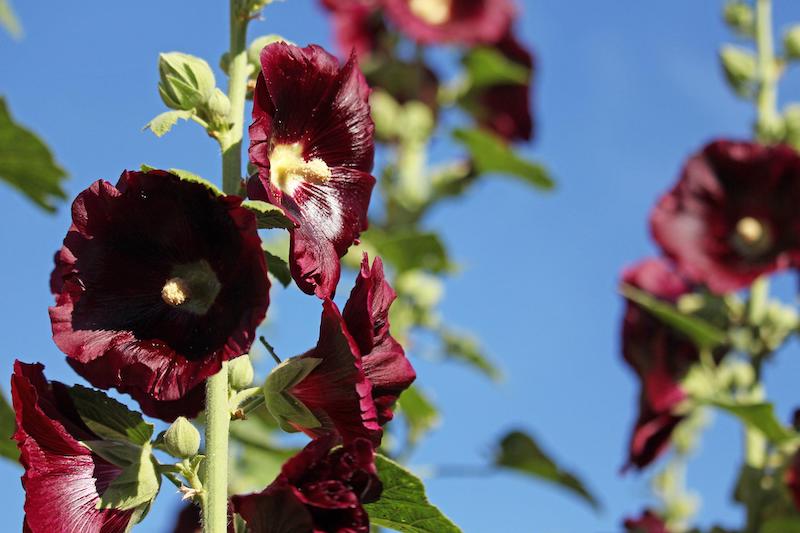Most plants need some nutritional assistance to thrive and look their best, and Hollyhocks are no exception. Some cultivars can reach 8 feet tall if a balanced diet is provided. Hollyhock plants can survive without fertilization, but these showy plants are typically grown for their size and stunning blooms. Fertilizing Hollyhocks ensures this beauty lives up to its potential.
You have options when it comes to fertilizing Hollyhocks. Fertile soil will support this plant’s rapid growth rate, and fertilizer applications can assist. Often a layer of compost in the spring is enough to support steady growth.

How to Fertilize Hollyhocks
Hollyhocks prefer rich, well-drained soil with a 6.0 - 8.0 pH. Advanced gardeners may want to test the soil and select products that optimize the growing conditions. Soil rich in organic matter will support healthy growth, and additional fertilization will not be necessary. Plants grown in low-quality soil will benefit from a topdressing of manure or an application of fertilizer. You can use a water-soluble or slow-release fertilizer, depending on your preference.
Best Time To Fertilize Hollyhocks
Spring is the best time to fertilize Hollyhocks. This spring bloomer needs extra nutrition early in the growing season so it can put on height and set flowers. Water-soluble fertilizers can be applied in the spring and again in summer. Slow-release fertilizers can be applied once in the spring.

Best Fertilizer For Hollyhocks
The best fertilizer for Hollyhock plants is a formula for blooming plants with higher levels of phosphorus. Products like Miracle Gro Bloom Booster will support Hollyhocks. Always apply the product to the root zone, not the foliage, and water after applying a granular fertilizer. Osmocote smart-release plant food is easy to use and slowly adds nutrients over several months to the root zone.
Hollyhock Fertilizing Tips
- Amend the soil with organic compost or manure during planting
- Top-dress the ground with organic compost during the spring
- Start fertilizing in the spring
- Apply a fertilizer for blooming plants every few weeks
- Slow-release fertilizer can be applied once in spring
Warnings
-Always wear protective gloves and a face mask when handling chemical fertilizers.
-Closely follow all directions and storage guidelines that are on the fertilizer label.
 |
Author Alison Cotsonas - Published 08-11-2022 |
